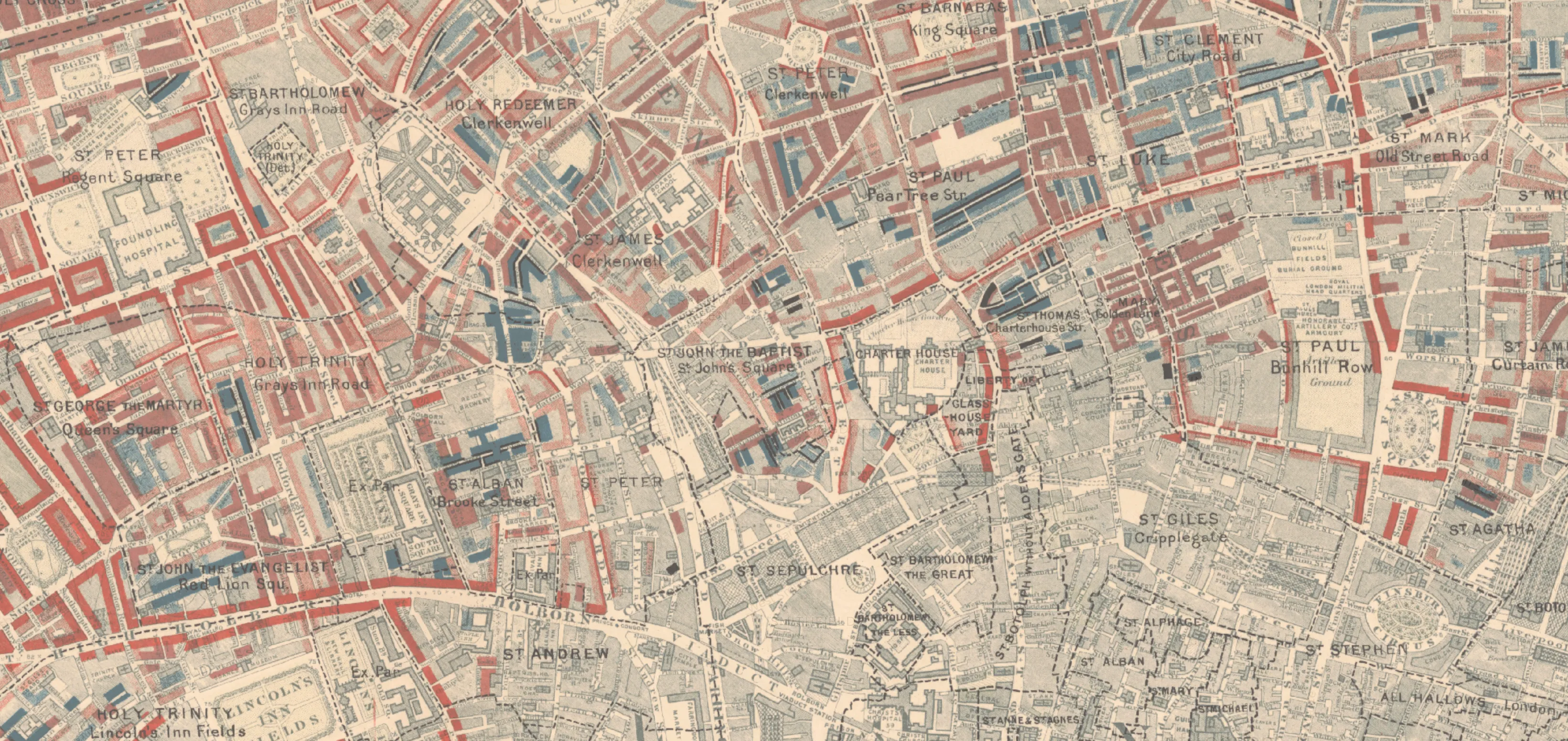About
Learn about the Booth archive and how to use this site
Learn about the Booth archive and how to use this site

For help or to provide feedback, send us an email. We answer enquiries in a few working days.
You can search the map for 19th-century parishes and landmarks.
You can compare Booth's map with a present-day map of London using the overlay tools slider at the bottom of the page.
To display notebook entries for individual locations on the map, use the control at the top right of the screen. Click on one of the pins to read the notebook entry for that location. This will display a summary of the notebook entry and a link to the notebook itself.
In the Notebooks section you can search, browse, view and download most of the notebooks Booth and his team produced during their research that formed the Inquiry.
In the case of the Police Notebooks series you will often be able to view the particular locations mentioned by following the "view on map" link.
Charles Booth's London contains digitised versions of most of the notebooks produced as part of Booth's Inquiry. It is possible that a search of the notebooks catalogue will return results for items that are not available to view on this website.
If you wish to access notebooks that have not been digitised, you are welcome to visit LSE Library's Reading Room to view the original or published versions of the notebooks.
In 2016, LSE Library's Archive of Charles Booth’s Inquiry into the Life and Labour of the People in London (1886-1903) was inscribed into UNESCO's Memory of the World Register. The archive comprises over 450 volumes of interviews, questionnaires, observations and statistical information. It documents the social and economic life of London, highlighting all of its contrasts, complexities and contradictions. The archive also takes us "behind the scenes" of the Inquiry itself, showing how Booth and his research team developed new methodologies and techniques in what is now recognised as a key milestone in the development of social research techniques.
The archive can be accessed in the Library's Reading Room. Many of the notebooks and maps are also available in Charles Booth's Archive on LSE Digital Library.
The original archival material (notebooks and poverty maps) used to create Charles Booth's London is out of copyright. The digitised derivatives on the site are therefore licensed under a Public Domain Mark with no rights reserved, meaning that they have "No Known Copyright" associated with them.
Images of Charles Booth on the home page and on the Who was Charles Booth? page were provided courtesy of Senate House Library.
The project to develop Charles Booth's London was led and funded by LSE Library. The site was developed by LSE Library, with Humap. The base map is OpenStreetMap.
To view more digital collections from LSE Library, visit LSE Digital Library.

Including material from the Charles Booth collection and more

